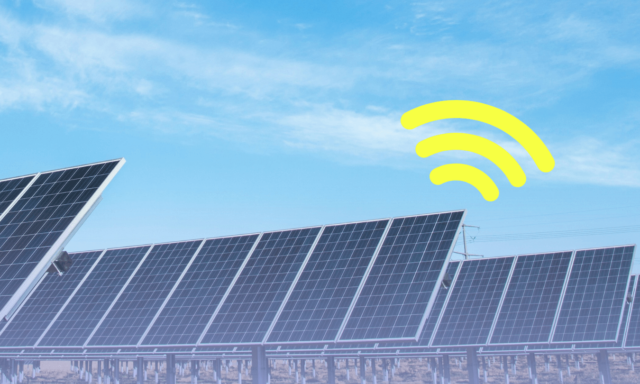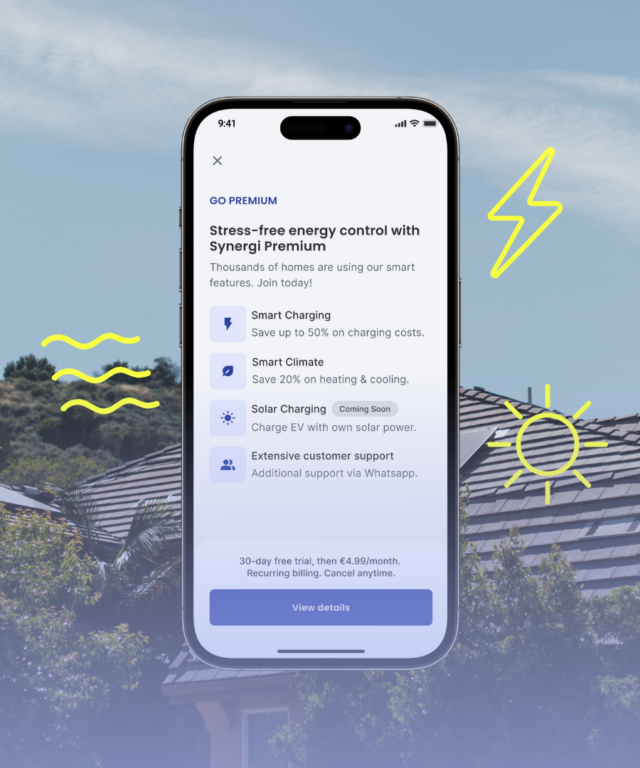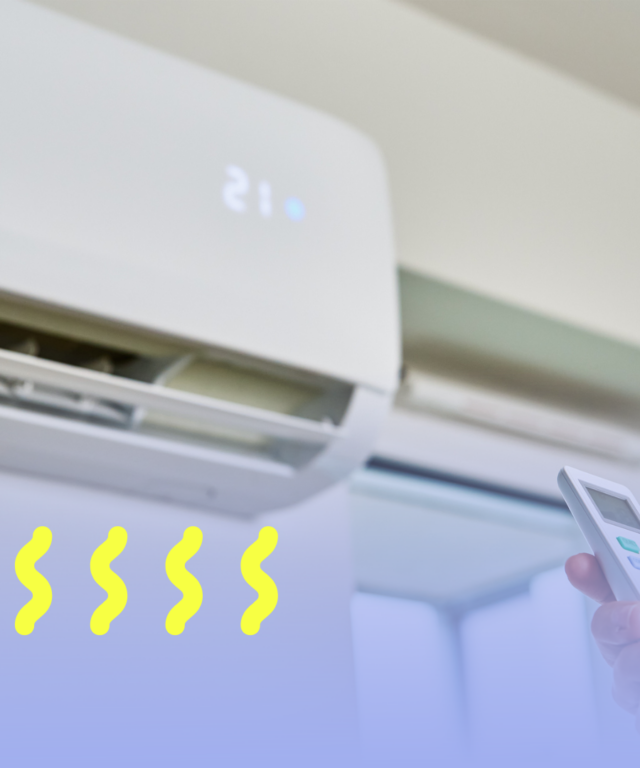In the rapidly changing electricity retail sector, technology and digital software solutions are becoming more crucial in providing the user experience that present-day households demand and have grown accustomed to.
Today’s customers are not only used to digital solutions seamlessly integrating into many aspects of their everyday lives and providing ease and simplicity—they demand them. Gone are the days when utilities could win customers and compete only by offering better electricity tariffs than others.
Nowadays, customers seek more than just an electricity contract when choosing a provider: they want better insights into their overall consumption, self-service portals to handle their contract and invoice-related matters without needing to wait for a customer service agent, and, as electricity prices are constantly touching new highs, the possibility to optimize their device’s electricity consumption according to real-time electricity prices.
Moreover, since electricity prices are expected to stay threefold (3x) compared to 2019 price levels until 2027 and twofold until 2060, the increasing need for utilities to offer software solutions that promote smarter electricity usage is expected to continue.
The blocks for building a better energy experience
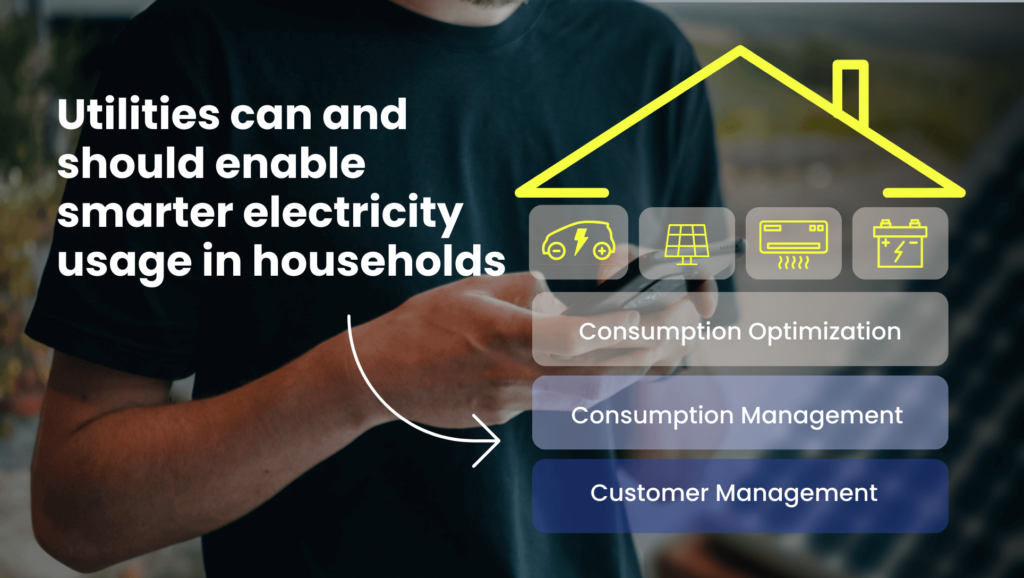
While many new end-user-focused software solutions are still developing, there are three rough categories in which these software solutions land: customer management, electricity consumption management, and electricity consumption optimization. All these different types of solutions are tailored to meet various customer needs, ranging from providing ease for customers handling their electricity contract-related aspects to allowing customers to save on their electricity bill & cut their emissions by optimizing their electricity usage.
In this blog, we will discuss the three types of software solutions and mention examples of companies in the Nordics that utilize them to gain a competitive edge.
1. Customer Management Software
Customer management systems were one of the first software solutions that utilities adopted at the start of the electric utility digitalization phase. With them, the customers of the utility companies could handle their electricity contract & utility company customership-related needs in a self-service manner without needing the assistance of a customer service representative from the utility company. What depicts the pace of digitalization in the industry is that these software solutions that started as something that only the major players in the field offered have quickly become a threshold capability and an industry standard that customers expect from their electricity retailer.
Offering electricity customers with self-service customer management portals provides various benefits for utility companies:
- First, it frees up resources from general customer service that previously went into repetitive manual guiding of customers regarding their contract-related topics and changes in their living residences etc.
- Second, it increases customer satisfaction as customers don’t need to book separate meetings with the electricity retailer to handle topics related to their customership. They can make or report the changes themselves through the customer portal.
These solutions are a standard amongst the utility companies in the Nordics, with all of the biggest utilities, such as Fortum and Vattenfall, as well as most of the more local utilities, such as Öresunds Kraft and Varberg Energi from Sweden providing self-service software for their customers.
2. Consumption Management Software
Consumption management software is a more advanced software solution that is becoming increasingly common among utilities’ solutions for their customers. These software solutions enable customers and households to gain insights into their electricity usage patterns and make manual adjustments according to their usage peaks relative to electricity prices to lower their electricity bills and reduce the load on the electric grid. In countries like Finland, it is required by law to offer customers a way to monitor consumption. Some utitlies today offer a web portal and others a mobile application for this.
Consumer demand for these solutions has emerged as electricity prices and volatility have increased. At the same time, spot-priced contracts have become increasingly common. This, combined with the fact that consumers are becoming more environmentally conscious, has led to consumers wanting ready-to-use solutions to monitor their electricity usage and make adjustments based on their own insights.
For utility companies, offering consumers solutions to monitor and manage their electricity consumption provides various benefits:
- First, it enhances customer experience and satisfaction, thus driving the company’s competitive positioning forward in the constantly increasing competition in the electricity retail market.
- Second, it makes utility companies’ offerings more future-proof. Constant investments to stay on top of current market trends ensure that the company doesn’t, for example, fall behind its competition in terms of its capability to adapt to new technologies; for instance, among the reasons that utilities list for adapting consumption monitoring software are that they offer the ability to integrate into the Datahub and capabilities and support for future market changes in the industry.
The consumption management and monitoring software is often integrated into the utility company’s application, from which they also offer the ability for their customers to manage their contract-related needs and update their customer information.
3. Consumption Optimization Software
The most recent addition to the software solution stack utilities provide is tools that allow consumers to optimize their electricity usage. While the consumption management/monitoring solutions enable consumers to gain insights into their usage patterns to adjust their consumption manually, these optimization solutions also allow consumers to shift their electricity usage to the periods when electricity is the cheapest during the day fully automatically.
The demand for optimization solutions is emerging from the increasing price and volatility of electricity prices and consumers’ increasing environmental consciousness. Consumers want to utilize the cheapest and greenest hours of electricity, but the problem is that these times often occur during the night, making manual shifting inconvenient.
Optimization software provides a solution for this problem, automating the process of electricity usage shifting to the cheapest hours. For utility companies, providing tools for end-consumers to optimize their electricity usage offers multiple advantages. On the customer side, it allows for enhanced customer experience and better customer retention as the consumers can reduce their electricity bills and carbon footprint. On the utility companies’ side, it reduces customer profile risk and enables better and more accurate consumption forecasts.
The adoption of these solutions is ramping up in the Nordics. Priorly only the most significant utilities and enterprises offered these services due to the high costs of developing and implementing electricity optimization tools and software. However nowadays, third-party providers provide solutions for utilities and thus the costs associated with offering these tools have decreased. For example, these solutions have become a must-have in the ever-competitive electric retail market, with most of the relevant electric utilities, such as Agva Kraft, Fjordkraft, and Å Strøm, offering an electricity optimization applications for their customers to use.
In Finland, the only company that had offered these solutions prior was Fortum. However, costs have decreased thanks to players coming to the market offering these software solutions. Some companies nowadays have built this offering by partnering with an API provider or purchasing a turnkey solution. Partnering with an API provider requires building the smart algorithms, developing the UX/UI, pre-testing integrations from different DER brands, and lots more.
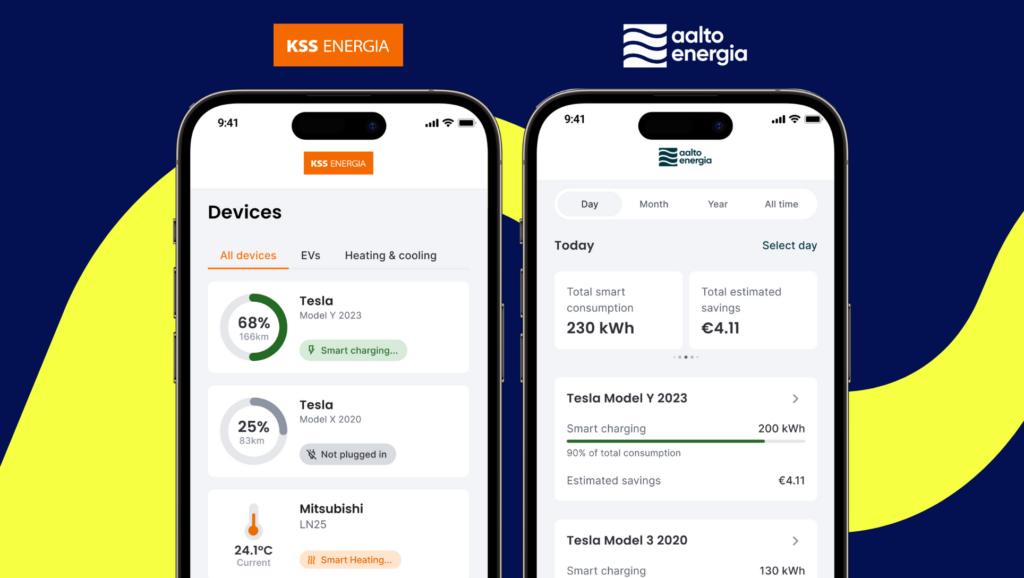
For example, KSS Energia and Aalto Energia have adopted Synergi’s turnkey offering and launched the Synergi app as a co-branded version so customers can use electricity more efficiently and reduce their electricity bills across multiple DERs. KSS Energia and Aalto Energia launched the app to enhance their customer experience, allow their customers to reduce their electricity bills, and position themselves as the forerunners in sustainability in the increasing competition in the electricity retail market.
Synergi offers turnkey digital solutions to help optimize your customers’ home electricity usage
With Synergi, you avoid costly software implementations, lengthy internal product development roadmaps, and staying behind the competition as we enable you to launch a co-branded smart electricity app in just a few weeks.
Leave your details in the form below to learn more about how to bring electricity optimization services to your customers in 2024.
Get in touch!
"*" indicates required fields
